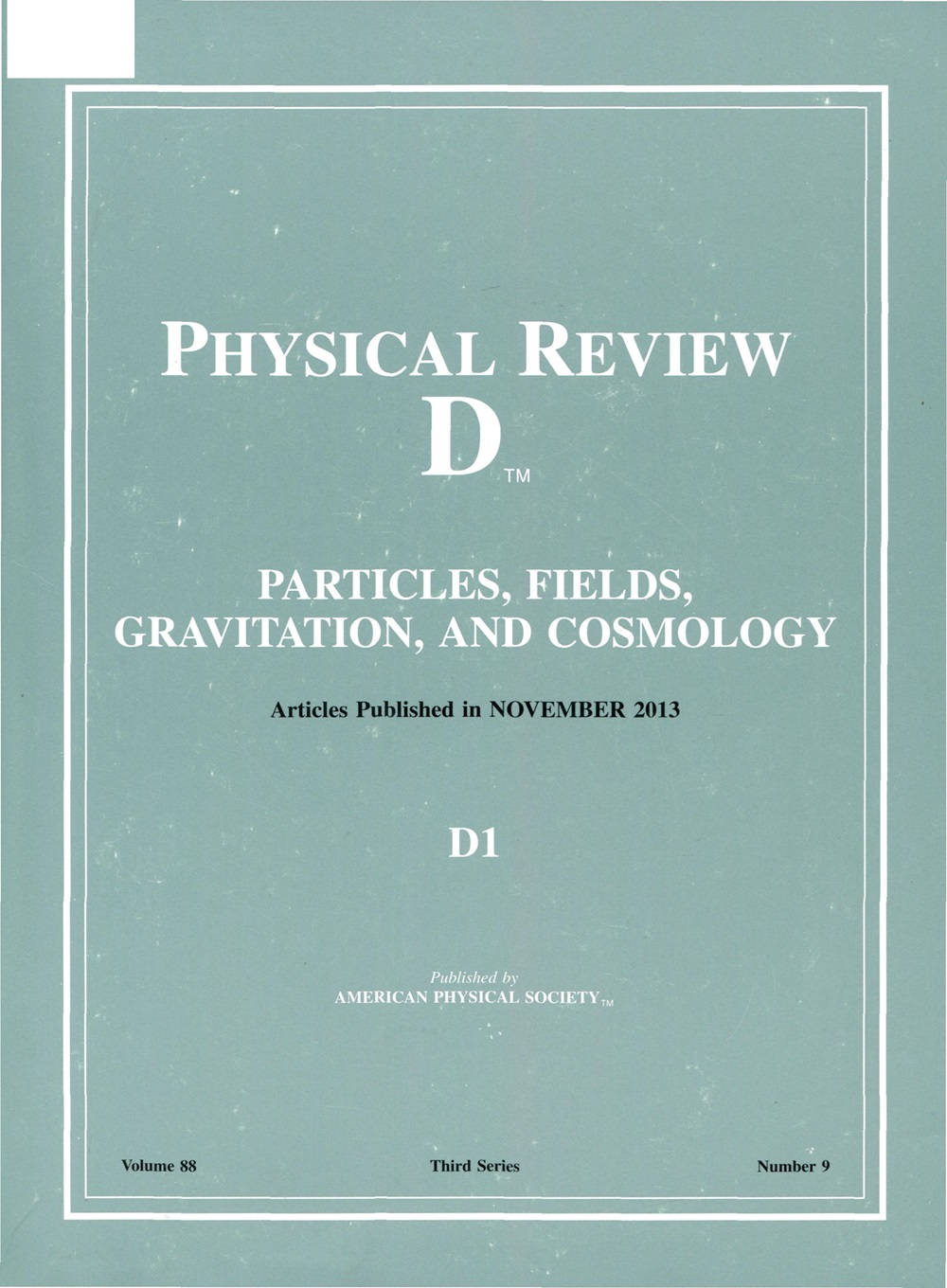Wavelet-harmonic integration methods
IF 5
2区 物理与天体物理
Q1 Physics and Astronomy
引用次数: 0
Abstract
A new integration method drastically improves the efficiency of the dark matter direct detection calculation. In this work I introduce a complete, orthogonal basis of spherical wavelet-harmonic functions, designed for the new vector space integration method. This factorizes the numeric calculation into a “vector” that depends only on the astrophysical velocity distribution; a second vector, depending only on the detector form factor; and a scattering matrix defined on the basis functions, which depends on the details of the dark matter (DM) particle model (e.g. its mass). For common spin-independent DM–Standard Model interactions, this scattering matrix can be evaluated analytically in the wavelet-harmonic basis. This factorization is particularly helpful for the more complicated analyses that have become necessary in recent years, especially those involving anisotropic detector materials or more realistic models of the local DM velocity distribution. With the new method, analyses studying large numbers of detector orientations and DM particle models can be performed more than 10 million times faster. This paper derives several analytic results for the spherical wavelets, including an extrapolation in the space of wavelet coefficients, and a generalization of the vector space method to a much broader class of linear functional integrals. Both results are highly relevant outside the field of DM direct detection.小波谐波积分方法
一种新的积分方法大大提高了暗物质直接探测计算的效率。在这项工作中,我介绍了一个完整的,正交的球形小波调和函数的基,设计了新的矢量空间积分方法。这将数值计算分解为仅依赖于天体物理速度分布的“矢量”;第二个矢量,仅取决于检测器的形状因子;以及基于基函数定义的散射矩阵,它取决于暗物质(DM)粒子模型的细节(例如其质量)。对于常见的自旋无关的dm -标准模型相互作用,该散射矩阵可以在小波谐波基中解析计算。这种分解对于近年来需要的更复杂的分析,特别是那些涉及各向异性探测器材料或更实际的局部DM速度分布模型的分析,特别有帮助。利用这种新方法,研究大量探测器方向和DM粒子模型的分析速度可以提高1000万倍以上。本文导出了球面小波的几个解析结果,包括小波系数在空间中的外推,以及将向量空间方法推广到更广泛的线性泛函积分类。这两个结果在DM直接检测领域之外是高度相关的。2025年由美国物理学会出版
本文章由计算机程序翻译,如有差异,请以英文原文为准。
求助全文
约1分钟内获得全文
求助全文
来源期刊

Physical Review D
物理-天文与天体物理
CiteScore
9.20
自引率
36.00%
发文量
0
审稿时长
2 months
期刊介绍:
Physical Review D (PRD) is a leading journal in elementary particle physics, field theory, gravitation, and cosmology and is one of the top-cited journals in high-energy physics.
PRD covers experimental and theoretical results in all aspects of particle physics, field theory, gravitation and cosmology, including:
Particle physics experiments,
Electroweak interactions,
Strong interactions,
Lattice field theories, lattice QCD,
Beyond the standard model physics,
Phenomenological aspects of field theory, general methods,
Gravity, cosmology, cosmic rays,
Astrophysics and astroparticle physics,
General relativity,
Formal aspects of field theory, field theory in curved space,
String theory, quantum gravity, gauge/gravity duality.
 求助内容:
求助内容: 应助结果提醒方式:
应助结果提醒方式:


